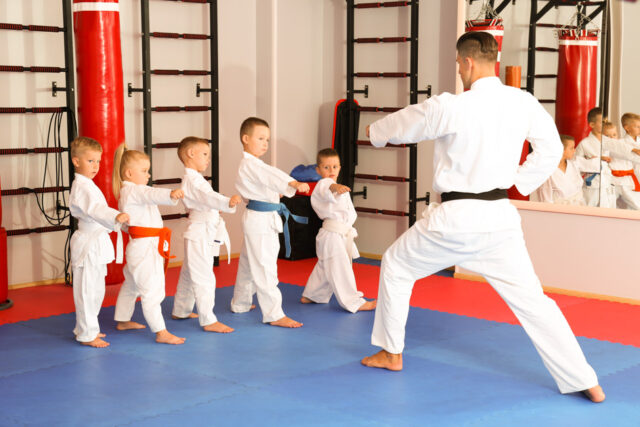
Karate is a popular martial art that offers children an opportunity to learn valuable self-defense skills, develop discipline, boost self-confidence, and stay physically active. A successful kids’ karate class should be engaging, fun, and educational. This article will discuss a variety of activities designed to keep children excited about learning karate while simultaneously teaching them valuable life skills.
Introduction to Basic Karate Techniques
To provide a solid foundation, it’s essential to introduce techniques of Karate For Kids such as punches, kicks, blocks, and stances. Instructors can create a fun environment by using games and challenges that allow kids to practice these fundamental skills. For example, instructors can set up a “Strike the Target” game where children must execute specific techniques to hit targets or knock down foam blocks. This helps build muscle memory and accuracy while keeping the activity enjoyable.
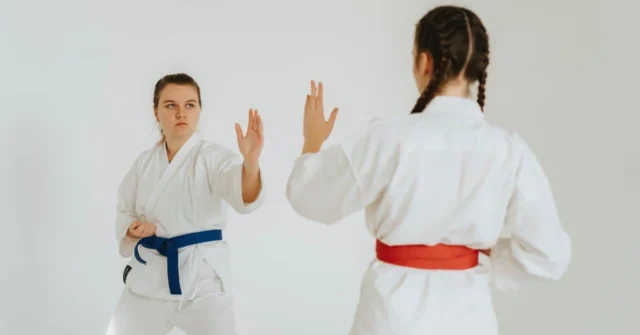
Exciting Warm-up Games for Kids
A good class should always start with a dynamic warm-up to prepare the body for the physical demands of martial arts training. Warm-up games can make this process more engaging for kids. Some examples include:
- “Karate Tag”: Children must avoid being tagged by the “sensei” while only moving in traditional karate stances.
- “Animal Movements”: Kids imitate various animals (e.g., crab walks, and bear crawls) to improve strength, flexibility, and coordination.
Building Confidence with Teamwork Exercises
Martial arts training is often perceived as an individual pursuit, but teamwork exercises can help build camaraderie and foster a sense of belonging among students. These activities can include relay races, group challenges, and cooperative games that require the children to work together to achieve a goal. Teamwork exercises can also help kids build communication skills, develop empathy, and learn the importance of supporting their peers.
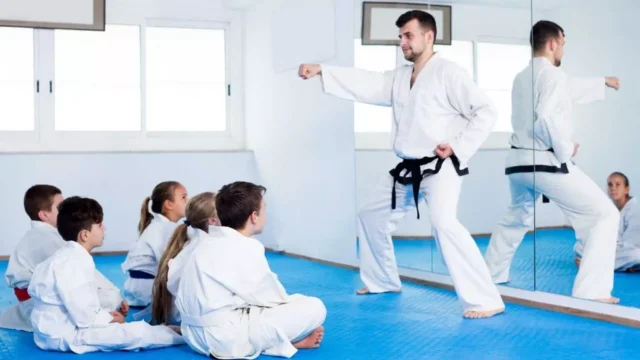
The Art of Kata: Learning Choreographed Patterns
Kata is a series of choreographed movements that represent offensive and defensive techniques against imaginary opponents. Learning kata helps children develop concentration, precision, and fluidity in their movements. Instructors can make this activity more engaging by:
- Breaking down the kata into smaller sections and using memory games to help children remember the sequence.
- Providing positive reinforcement and offering constructive feedback to help kids refine their movements.
- Encouraging students to perform kata as a group or in pairs, allowing them to learn from one another.
Fun Agility Drills and Obstacle Courses
Agility drills and obstacle courses can improve children’s balance, coordination, and overall physical fitness. Instructors can design courses that incorporate karate techniques, such as jumping over hurdles with a front kick, crawling under nets using a low stance, or weaving through cones while maintaining proper footwork. These activities can be turned into friendly competitions or timed challenges to keep children motivated and engaged.

Engaging Focus and Concentration Activities
Focus and concentration are vital skills in martial arts. To help kids develop these skills, instructors can introduce activities such as:
- “Sensei Says”: A variation of, “Simon Says” that requires children to listen carefully and follow instructions while performing karate techniques.
- “Focus Drills”: Kids must maintain eye contact with a partner while executing techniques, encouraging mindfulness and concentration.
Exploring Self-Defense Scenarios through Role-Play
Role-playing scenarios can help children understand the practical application of the techniques they learn in class. Instructors can create age-appropriate self-defense situations and guide the students through the process of identifying potential threats, using verbal de-escalation, and applying karate techniques when necessary.
Boosting Coordination with Karate-themed Dance Routines
Incorporating dance routines into karate classes is an innovative way to improve coordination and make the learning experience more enjoyable. Instructors can choreograph routines that combine martial arts techniques with popular dance moves, set to upbeat music. Children can practice these routines individually or in groups, allowing them to express themselves creatively while reinforcing karate skills.
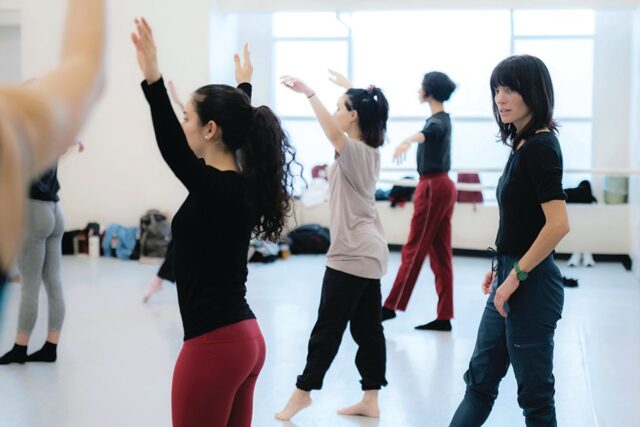
Practicing Respect and Discipline through Traditional Etiquette
Teaching children the traditional etiquette of karate helps instill a sense of respect and discipline. Activities can include:
- Learning to bow correctly when entering and exiting the dojo or before and after sparring with a partner.
- Encouraging students to use appropriate titles when addressing instructors and senior students.
- Teaching the importance of punctuality, cleanliness, and maintaining a well-organized training environment.
By incorporating etiquette lessons into fun activities and games, children can develop a deep appreciation for martial arts values and traditions.
Interactive Memory Games for Martial Arts Terminology
Learning the terminology used in karate can be challenging for young students. Instructors can use memory games to help children become more familiar with the names of techniques, stances, and other essential terms. Some examples include:
- “Karate Bingo”: Children receive bingo cards with karate terms and must identify the correct term when the instructor demonstrates a technique.
- “Technique Charades”: Kids take turns acting out a technique while their teammates guess the correct term.
These games not only make learning terminology fun but also reinforce the techniques being taught in class.
Safe Sparring Sessions to Test Skills and Progress
Sparring is an essential aspect of martial arts training, allowing children to practice and apply their techniques in a controlled environment. Instructors should closely supervise sparring sessions to ensure safety and provide guidance. Some tips for engaging in sparring sessions include:
- Using protective gear, such as headgear, mouthguards, and padded gloves, to minimize the risk of injury.
- Encouraging students to focus on technique, control, and sportsmanship rather than winning or losing.
- Pairing students of similar age, size, and skill level to promote a fair and enjoyable experience.
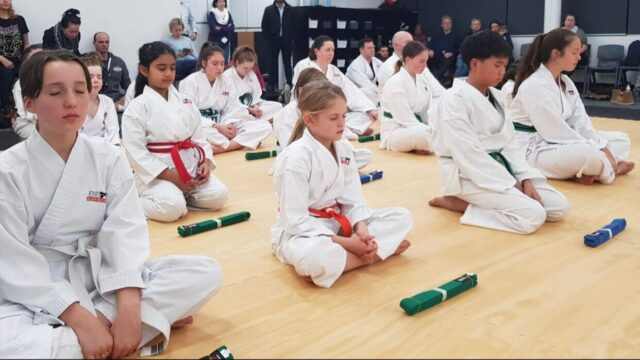
Celebrating Achievements with Karate Belt Ceremonies and Awards
Recognizing children’s progress and achievements is crucial for maintaining motivation and fostering a sense of accomplishment. Karate belt ceremonies, where students are awarded new belts upon meeting specific criteria, are a traditional way to celebrate their development. Instructors can also present awards or certificates for outstanding performance, effort, or improvement in various aspects of their training.
Conclusion
Kids’ karate classes have a lot to offer in terms of fun and engaging activities that can help children learn the basics of self-defense, build physical strength and agility, increase their confidence, and improve their discipline and respect for others. Taking part in these types of activities ensures that your child develops important life skills while having a great time. Whether you want to give your little one an extra boost in physical activity or are looking for something inspiring and unique to do as a family, karate classes can be a great way to get started.









